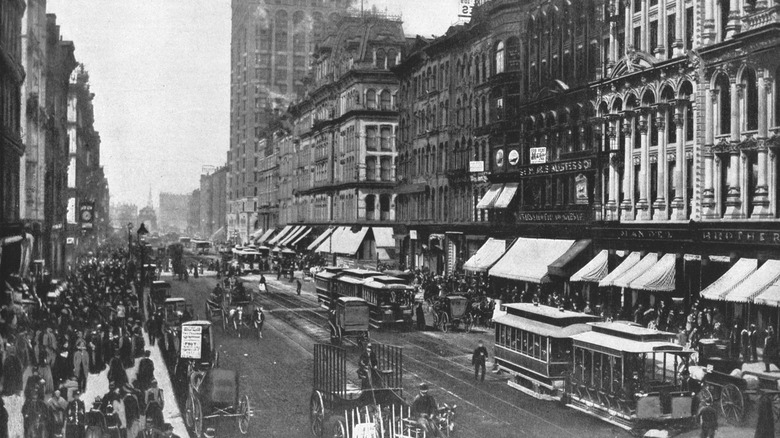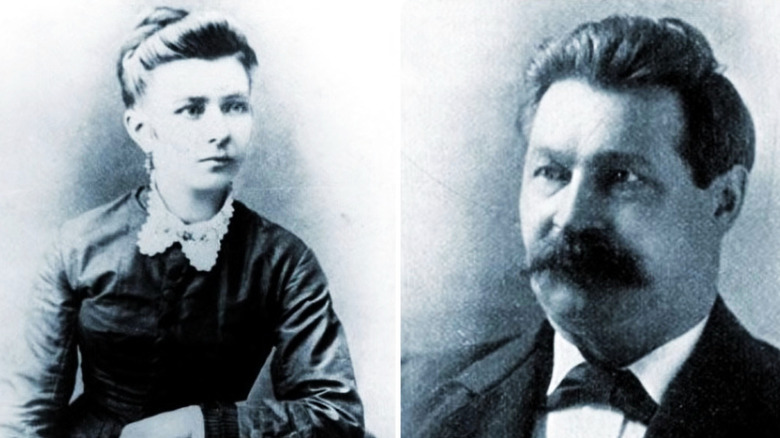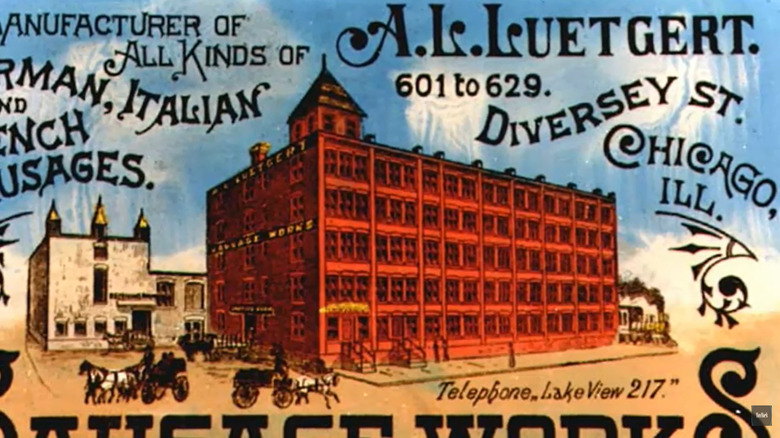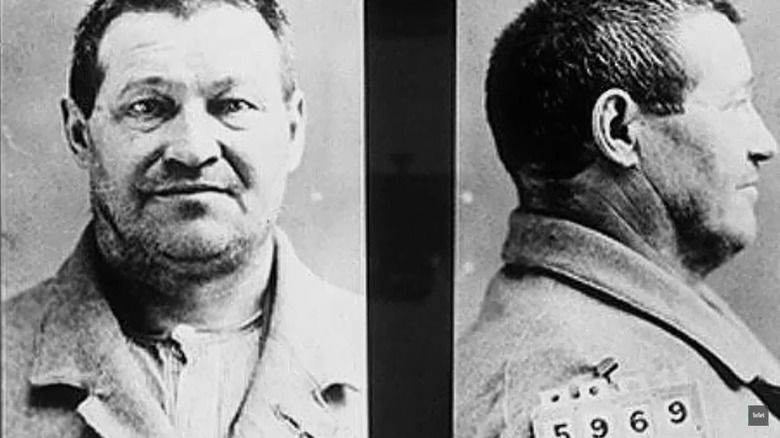The 1897 Chicago Sausage Vat Murder Explained
If the O.J. Simpson saga was that era's "trial of the century," you could make an argument that the case of Adolph Louis Luetgert, on trial for the murder of his wife, Lousia, was its 19th-century counterpart. The two share some striking similarities — a troubled marriage, a history of domestic violence, and plenty of lurid details that kept the press (and the public) captivated for months.
The Luetgert case, commonly known as the Chicago sausage vat murder (pausing here to give you time for a full-body shudder), is not only notorious but legally noteworthy too. According to the Yale Review, the legal precedent of corpus delicti was first established in a case 50 years before Luetgert went on trial when the prosecutor won a murder conviction in a case where no body had been found. You can probably tell where this is going.
In this case, prosecutors faced a similar challenge: securing a murder conviction without Lousia Luetgert's body as evidence. In fact, the Luetgert trial was noteworthy in another way too, as it was the first to call a forensic anthropologist as an expert witness.
The story of Adolph and Louisa Luetgert
19th-century Chicago was a city of immigrants, and Adolph Luetgert was no exception. The German-born Luetgert moved to America at the age of 24 and found work first at a tavern and later in the meat business, says the Yale Review. As was sadly common of the time, Luetgert's first wife died in childbirth but it wasn't long before he married Louisa, a recent German immigrant herself. By 1892, Luetgert was the proud owner of his own sausage plant, which, at five stories and capable of supplying millions of pounds of pork products, was the city's largest.
Things wouldn't stay so idyllic for long, though. Less than five years into business, Luetgert would make a terrible mistake — one with serious implications for his business and his marriage. According to the Yale Review, Luetgert was badly swindled and then found himself in debt to some very powerful and dangerous people.
Reportedly, the couple argued about everything from money to Luetgert's rampant infidelity (which even included an ongoing fling with Louisa's cousin). He was even believed to be slyly courting a widow (wealthy, of course) on the side.
Here's what happened to Louisa Luetgert
The last time Louisa Luetgert was credibly sighted was on May 1, 1897. When her brother didn't hear from her, he grew suspicious, but Adolph Luetgert simply claimed his wife had finally left him, probably to go back to Germany, he added, according to Murder By Gaslight.
Sure, that sounds plausible but let's look at what Luetgert was reportedly up to the night before his wife's disappearance. First, he had some workmen help him turn on the steam in the factory before sending them on an errand. When workers returned the following morning, they found something unusual — one of the basement vats was full of a "thick, foul-smelling, reddish scum," also found on the floor. It was strange enough that they notified authorities, who drained the vat. Among the vat's contents, they found parts of a metal corset, two rings (one with the initials "LL"), and bone fragments.
To make matters worse, the police also caught onto the fact that Luetgert had recently bought both arsenic and potash, a potassium-rich salt often used in the production of detergents. It's similar to lye and, according to an industry site called Soap Warehouse, "Both are used to change fats into soap." In other words, the perfect material to dissolve a body. Though a first trial ended in a hung jury, even a Sausage King can fall. Adolph Luetgert was found guilty of his wife's murder following his second trial and given a life sentence.
Aftermath of the Luetgert trial
The Luetgert case was a significant ruling given the absence of Louisa's body, and likely impacted the course of justice in similar cases going forward. Meanwhile, the sausage-loving city, full up on grisly details of a murder that likely never involved sausage at all, still temporarily lost their taste for it. True chime blog Murder By Gaslight reports that sausage sales fell following the conviction.
If you happen to live on the northwest side of Chicago, Find A Grave encourages you to keep an eye out, particularly on May 1, when it's believed Louisa was murdered. Reportedly, Louisa's ghost has been sighted in the neighborhood on that sad anniversary, and sightings were also reported by neighbors and tenants of the family home after Luetgert was convicted. Even prison couldn't protect Luetgert from Louisa's ghost, whom he claimed was mercilessly haunting him in the months before his death, proving a woman scorned doesn't even need a corporeal form to really mess you up — we'll get it done anyway. Despite his life sentence, Luetgert wasn't in prison long. He was found dead in his cell just 18 months later. While the July 28, 1899 edition of the Wilmington Daily Republican notes his death was officially caused by "fatty degeneration of the heart," if you prefer to pin it on Louisa's ghost, we doubt she'd mind.



